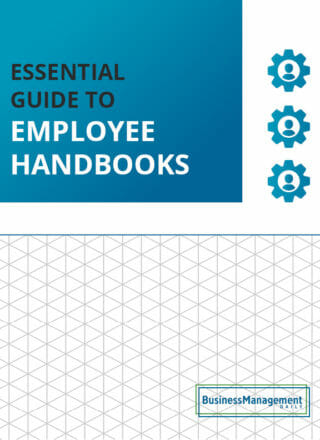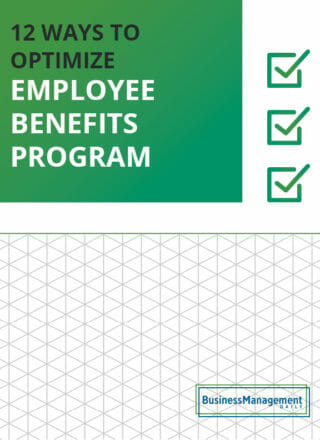Flexible working hours: Do they work?
At this point, we all know that flexible working hours became all the rage immediately after the lockdown in 2020.
This is primarily because employees became infatuated with the improved work-life balance and sense of well-being that remote work provided.
As a direct result, flexible work schedules became one of the top-selling points for top talent, with some claiming it’s more important than pay.
According to a 2023 survey by The Conference Board, 65% of respondents said workplace flexibility was their #1 deciding factor when looking for new jobs, placed even above bonuses and incentive pay.
But is that still the case?
Are flexible working hours still in demand as we move into 2025, or have things changed?
There’s been a strong divide between employers’ and employees’ views of flexible working arrangements.
In a nutshell, employees love working from their home offices, while employers have had enough.
While employees love the sense of freedom that work flexibility brings employers long for the days of having complete control over on-site work.
90% of employers enacted return-to-office mandates in 2024, much to the chagrin of their employees.
A study from the University of Pittsburgh discovered that 99% of the organizations that forced employees to return to the office saw significant decreases in job satisfaction.
So, it’s clear that a happy medium must be found to satisfy both employers and employees.
How do you do that?
Stay tuned for the best and newest ways to implement flexible working hours at your organization.
What is a flexible work schedule?
Traditionally, a flexible work schedule allows employees to set their working hours to create an optimal work-life balance. Flextime forgoes the traditional 9-to-5 work structure, favoring 4-day work weeks, part-time work, remote work, and other work schedule models.
It can also let employees choose to complete work hours on-site or remotely.
Flexible working hours don’t always have to mean working fewer hours, either.
In some cases, remote workers who set their hours work more than traditional employees.
According to a survey by Gartner that polled 10,000 remote workers from the US and Europe, flexible working hours are the primary reason for their improved productivity post-pandemic. Choosing where and when to complete work is an excellent motivator, which is certainly a perk of providing a hybrid workplace.
Plenty of evidence shows that flexible schedules lead to happier, more productive employees, which benefits the organization.
That’s not to say flexible working hours are without downsides, but there’s no denying that when appropriately implemented, different schedules can yield many benefits.
Employees love the freedom to set their schedules, which is great for their mental health and can help combat burnout.
What are the challenges of implementing flexible working hours?
Flexible schedules present some real difficulties for employers, and these stretch beyond employees not working in person.
The primary challenges of compressed workweeks and flex schedules are:
- Managing team members in different time zones. Telework is especially tough if you hold regular meetings with your staff, as scheduling can quickly become a nightmare. While apps like Zoom allow remote workers to speak with one another, the time zone issue presents a real problem. Getting your team on the same page can be extremely difficult when they all live and work in different time zones.
- Finding a suitable flexible working model for your company. Today, many flexible work schedules make selecting one a daunting task. Complicating the issue even further is that certain companies benefit from different flexible schedules. It’ll take lots of effort and experimentation to land on the suitable model for you, which can take the time and money you need.
- Getting your team to record their hours correctly. Your full-time employees still have to log their hours when working remotely, which can be challenging. Since you can’t swing by their desk and see what they’re working on, you’ll have less knowledge of what they’re doing at all times. If an employee needs to remember to log their hours, it can be challenging to know how many hours they worked that day, which can cause payroll issues.
These genuine challenges cause many employers to deliver RTO (return to office) mandates to avoid them.
However, there are solutions to each of these issues, which are:
- Use asynchronous communication for time zone challenges. If you have a few team members who reside in challenging time zones, use asynchronous communication (such as a pre-recorded video or in-depth email) to get them up to speed.
- Uncover your needs and research flexible working models. As long as you define your needs first, it would help if you didn’t have too much trouble finding a flexible work model that aligns perfectly with your organization’s needs. Check out our list of flex models below to find one that works for you.
- Use remote tracking software to monitor your team’s progress. There’s no shortage of remote employee tracking software. These programs make managing your remote team’s work hours as painless as possible, which is a huge plus.
The different flexible working models
Flexible work arrangements have seen an overhaul in recent years due to the prevalence of remote work.
Since 2020, human resource departments have been tasked with finding new ways to implement flexible schedules that satisfy employees and employers.
It has been challenging, but HR professionals have shown miraculous creativity and resourcefulness in reimagining employee work schedules.
Modern flexible schedule models include:
- The hybrid model
- Freeform hybrid schedules
- Compressed workweeks
- Four 10-hour days (known as the 4/10 schedule)
Let’s look at each one to learn which fits your needs best.
Hybrid work schedules
As the name implies, this type of work schedule is a ‘hybrid’ between remote and in-person work.
In a hybrid schedule, an employee may get to work at the office two days a week while knocking out the other three days at their home office.
Hybrid schedules grant employees a level of flexibility that they find liberating, which proves employee engagement and productivity.
The benefits continue, however.
Research shows that hybrid work remedies the top three issues causing high turnover rates:
- Childcare (55%)
- Well-being (47%)
- Work-life balance (47%)
So, if your organization struggles with retention, a hybrid work schedule may be the solution you’ve been looking for.
In a traditional hybrid model, the employee’s manager decides which days they work at home and which they spend at the office.
This ensures that each team member’s core hours are spent where needed most, ensuring high employee productivity.
Freeform hybrid schedules
The freeform hybrid schedule kicks things up a notch by granting employees the autonomy to choose which days they work from home.
While managers will still decide their total hours for each workday, it’s up to the employees whether or not they show up to the office.
This type of schedule yields significant employee benefits, such as the ability to schedule work around life events like doctor appointments.
They can squeeze it in on a remote day rather than taking a day off to go to the doctor.
Compressed workweeks
Burnout has been a massive issue amongst employees in recent years.
According to a report by Mercer, 82% of employees are at risk of experiencing burnout in 2024.
This isn’t good, as burnout has serious adverse effects on employees. These include:
- Not having enough time for their personal life
- High absenteeism rates due to stress and illness
- Depression and anxiety
- Increased likelihood of heart disease, diabetes, and death before age 45
In other words, burnout is not an issue employers should take lightly.
Recently, some organizations have fought back against burnout by implementing compressed workweeks.
This is where you reduce your employees’ hours to A) give them some breathing room and B) improve their productivity and engagement levels.
In particular, companies are experimenting with 4-day workweeks that snip working hours from 40 down to 32.
During a six-month pilot program of the four-day work model, employees boasted higher productivity levels, were more engaged, and provided higher-quality work than before.
The 4/10 schedule
Another option that’s similar to a compressed workweek is the 4/10 schedule.
The main difference here is that while employees still enjoy a 4-day workweek, they still work 40 hours.
This is because they work four 10-hour shifts, which has the added benefit of three days off each week.
This is an attractive option for companies that want to provide flexibility for employees but still need 40 hours’ worth of productivity each week.
The benefits of flexible working hours
What will implementing flexible working hours at your organization do for you?
Flexible schedules offer plenty of benefits for employees and organizations, so let’s examine what they entail.
Boosted employee productivity
While employees should be more productive when working long hours, that’s not the case. In the traditional 9-to-5 model, most employees watch the clock instead of being productive.
Flexible work hours enable employees to work when they feel most productive. Some employees may do their best work at home in the middle of the night, while others prefer a busy coffee shop at the crack of dawn.
A Stanford University survey found that flexible hours and remote working increased employees’ productivity by 13%.
Increased job satisfaction
As stated before, job satisfaction matters most to millennial workers, and flexible hours are a great way to improve it.
According to Stats Canada, 79% of employees with flex schedules reported being either satisfied or very satisfied with their work. That’s a clear sign that granting your employees some flexibility will improve their view of their position and work.
Shorter commutes
Even if your organization doesn’t want to offer the ability to work remotely, a little flexibility in employee working hours will go a long way. For instance, the average one-way commute time in the United States is 27.6 minutes, equivalent to five wasted work hours a week.
Allowing your employees to leave thirty minutes earlier than usual can help them avoid rush hour traffic and enjoy a far shorter commute. This will positively impact their energy level and productivity, so it’s worth trying.
Better employee retention
If your staff enjoys an optimal work-life balance, they’re far more likely to stick around during hard times, improving your retention rates. You’ll also have a far easier time recruiting top talent if you offer flexibility in your working hours & environment.
Final takeaways: Flexible working hours
As 2025 inches closer, it’s clear that flexible working arrangements are here to stay.
While many companies tried to force employees back into the office earlier this year, that effort largely backfired.
The best route employers can take now is to choose a flexible working model that works best for their needs.
Whether you choose the 4/10, a compressed workweek, or a hybrid model, flexible schedules will inspire your employees to work harder and stay with you longer, so they’re worth it.
More resources:
The burnout epidemic: Why it’s happening and how to fix it
Toxic employee undermining boss? How to stop workplace rumors
Leadership vs. management: What’s the difference






